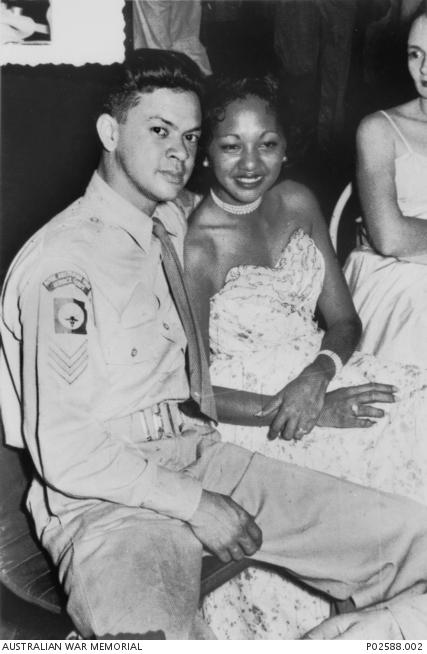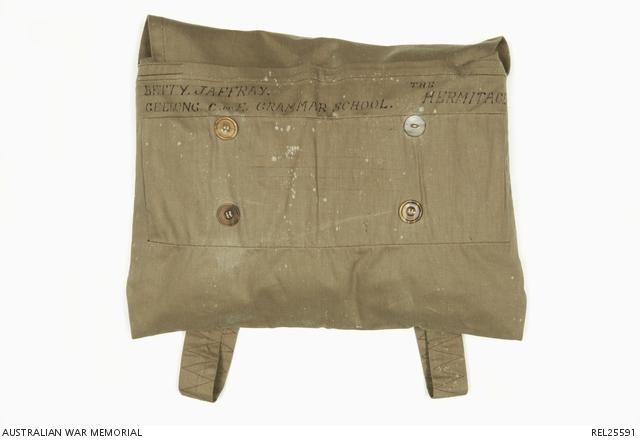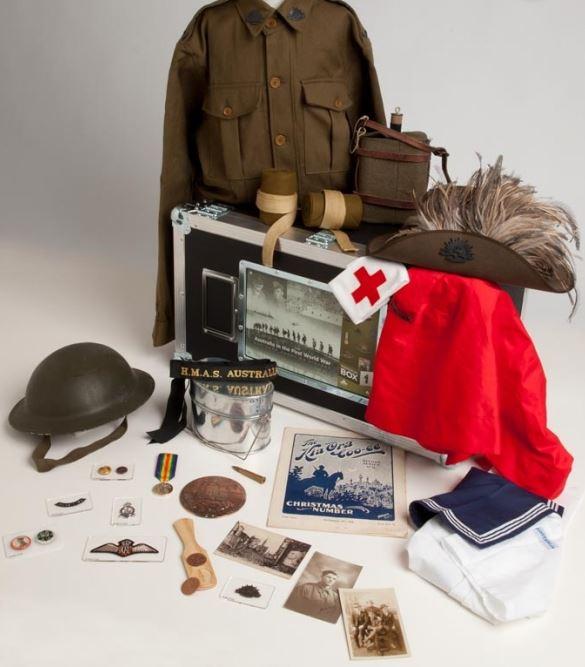How Mary's story of survival is reaching a new generation

Mary and Herbert at a ball, Headquarters, Northern Command, Northern Territory, c. 1951.
Mary Cubillo was just 10 years old when her family was evacuated from Darwin during the Second World War. The third of nine children, Mary was one of the Larrakia people, the traditional owners of the land in Darwin and Point Cox. She was given an evacuation knapsack and her mother was allowed to pack one suitcase for herself and her large family.
Mary’s father, John, and her uncles stayed behind. She later learned that her father, who worked on the wharves, was killed when 188 Japanese planes attacked Darwin Harbour on 19 February 1942. His body was never found.
Mary’s story is told as part of a large outreach program run by the Education team at the Australian War Memorial which features more than 90 Memorial Boxes that are filled with objects and artefacts such as the knapsack given to Mary.
Memorial Boxes are used by schools throughout Australia to invigorate classroom lessons, inspire historical investigation, and add meaning to commemorative activities. They can be adapted for use as a therapeutic tool in aged-care facilities or as an interactive display in a community museum.
Education officer Helen Casey said the Memorial Boxes were designed to support the Memorial’s mission to help Australians remember, interpret, and understand the Australian experience of war.
“They contain a variety of hands-on objects and case studies which can be linked to our online resources,” she said. “Just under half of our users are secondary schools, and the other half are primary schools, but an important group are also our community users, such as libraries, aged-care facilities and youth groups.”

This knapsack belonged to Elizabeth Jaffray, a student at Geelong Church of England Girls’ Grammar School, c. 1942–43.
There are four different Memorial Boxes available for loan from agents around Australia. Each corresponds to different conflicts or aspects of wartime experience: Australia in the First World War, Australia in the Second World War, Vietnam: the Australian Experience, and Aboriginal and Torres Strait Islander wartime service.
Education assistant Natalie Lynch helped co-ordinate the redevelopment of the Second World War Memorial Boxes. “We needed to ensure all the content and the items aligned with the Australian curriculum and that all of the content was accessible to children and adults of all ages,” she said. “One of the biggest challenges was trying to find an appropriate artwork or photograph or item that covered every aspect of Australia’s involvement in the Second World War. As you can imagine that was a huge task … We then [had] to see if we had 32 of those items because we were creating 32 boxes, and if we didn’t, we then had to source those items from other places.”
The boxes include real and replica uniforms, equipment and artefacts, as well as case studies like Mary’s.
Mary and her family were eventually sent to Adelaide, where they lived in an intern camp at Balaclava Racecourse. When they arrived they had to sleep on wool bales stuffed with straw, but were soon given army blankets and beds. The family tried to settle in, but life in Adelaide felt strange; in Darwin, most people had dark skin, but in Adelaide they were surrounded by a sea of white faces. It was also much colder than Darwin, though the Red Cross gave the children clothes to keep them warm. Worst of all, most people in Adelaide did not understand what had happened in Darwin, because the Australian government had censored reports of the bombings.
In 1946, Mary and her family returned to Darwin where Mary found work as a maid in a hospital ward. She eventually married a young sergeant named Herbert Lee and had 11 children. Today her story and knapsack continue to help children throughout Australia understand and interpret the Australian experience of war.
Learn more about Memorial Boxes.

There are four different Memorial Boxes available, including Australia in the First World War.